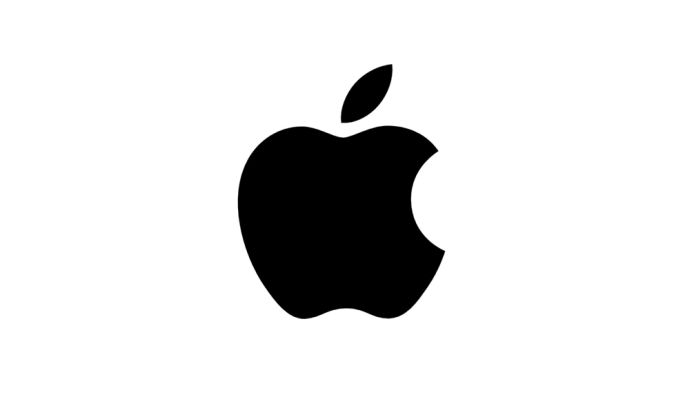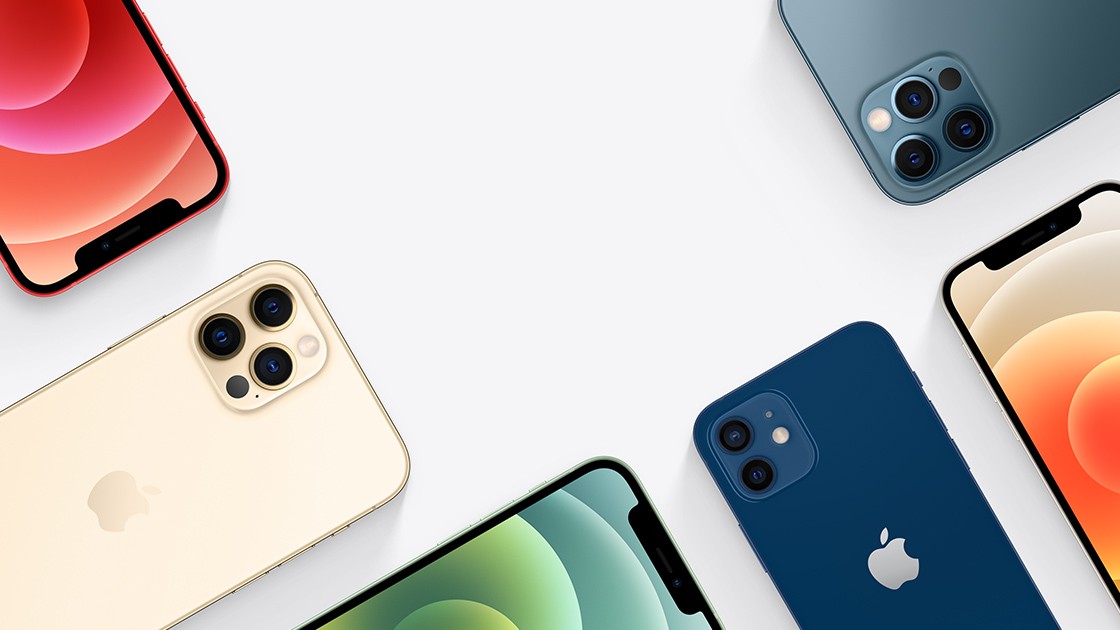
Choosing the right iPhone can feel like navigating a technological maze. With Apple continuously evolving its smartphone lineup, consumers are presented with an array of models whose qualities aren't always made obvious by the company's confusing naming system.
From the budget-friendly iPhone 16e to the cutting-edge Pro Max series, each model varies in terms of features, cameras, processors and more. This guide will break down how exactly they differ from each other, and give you the specs to choose the best iPhone for your budget.
Do remember, though, the best camera phone isn't always an iPhone. For comparison, we also recommend checking our guides to the the best Samsung phones and the best Google Phones.
iPhone generations: all the models you can buy
Why you can trust Digital Camera World
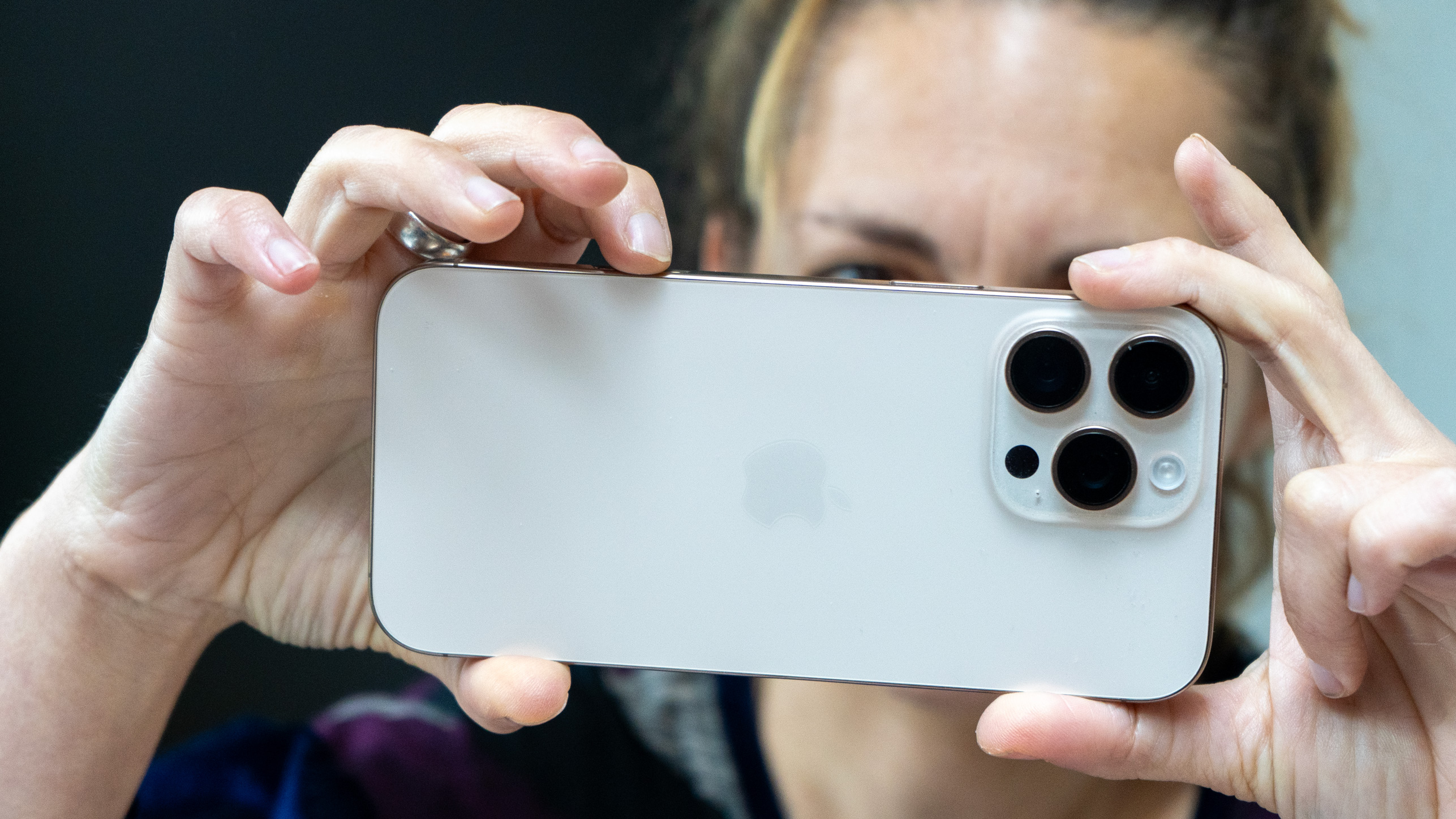
Specifications
Reasons to buy
Reasons to avoid
The iPhone 16 Pro Max represents Apple's most advanced smartphone yet, boasting notable upgrades. Its slightly larger titanium frame houses a 6.9-inch Super Retina XDR display, the largest iPhone screen to date, with slimmer bezels for a more immersive experience. A new Camera Control button offers quick camera access and intuitive photo setting adjustments.
Powered by the A18 Pro chip, the device delivers exceptional performance for everything from daily tasks to intensive gaming and 4K video editing. The camera system features a new 48MP ultra-wide sensor, enhancing macro photography and low-light performance. Improved Photonic Engine processing and an AI-powered Clean Up tool further boost imaging capabilities.
It's also worth noting that Apple's much trumpted 'Apple Intelligence' system has debuted with this series, bringing AI enhancements to photography, writing assistance, and Siri. And in general, the 16 Pro Max is ideal for users seeking cutting-edge iPhone technology and willing to pay a premium.
On the downside, it's very expensive. And the fact that AI features are being drip-fed over time (they were absent at launch) mean that unless money is no object, we'd probably recommend the more affordable iPhone 16 (number 3 on our list) over this for most people. For more details, see our iPhone 16 Pro Max review.
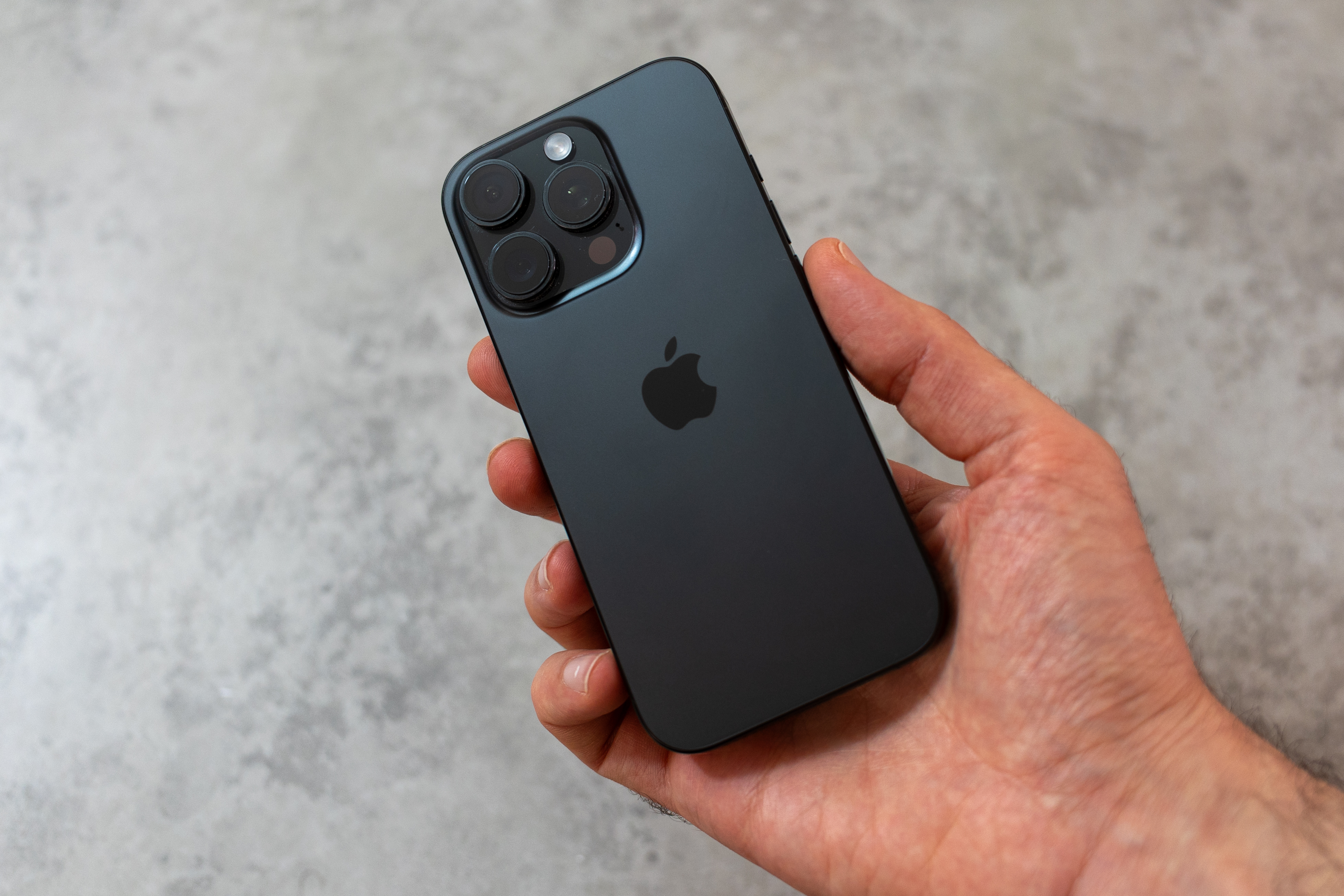
Specifications
Reasons to buy
Reasons to avoid
The iPhone 16 Pro is basically the same phone as the iPhone 16 Pro Max, but smaller. On the downside, that means it has a smaller display (6.3 inches compared to the Max's 6.9 inch), providing less screen real estate for viewing content and using apps. On the upside, that makes it more portable, and a little cheaper too. So ultimately, the choice between the two depends on your budget, and whether you prioritize a larger screen or a more compact device.
Our reviewer was broadly impressed with the Pro's performance and battery life, offering impressive longevity even under heavy use. But there were a few niggles, including the awkward placement of the Action Button, and the mediocre secondary cameras compared to Android competitors. In his opinion, this makes the iPhone 16 Pro a less-than-obvious upgrade, especially for those with recent iPhone models. For more details, see our iPhone 16 Pro review.
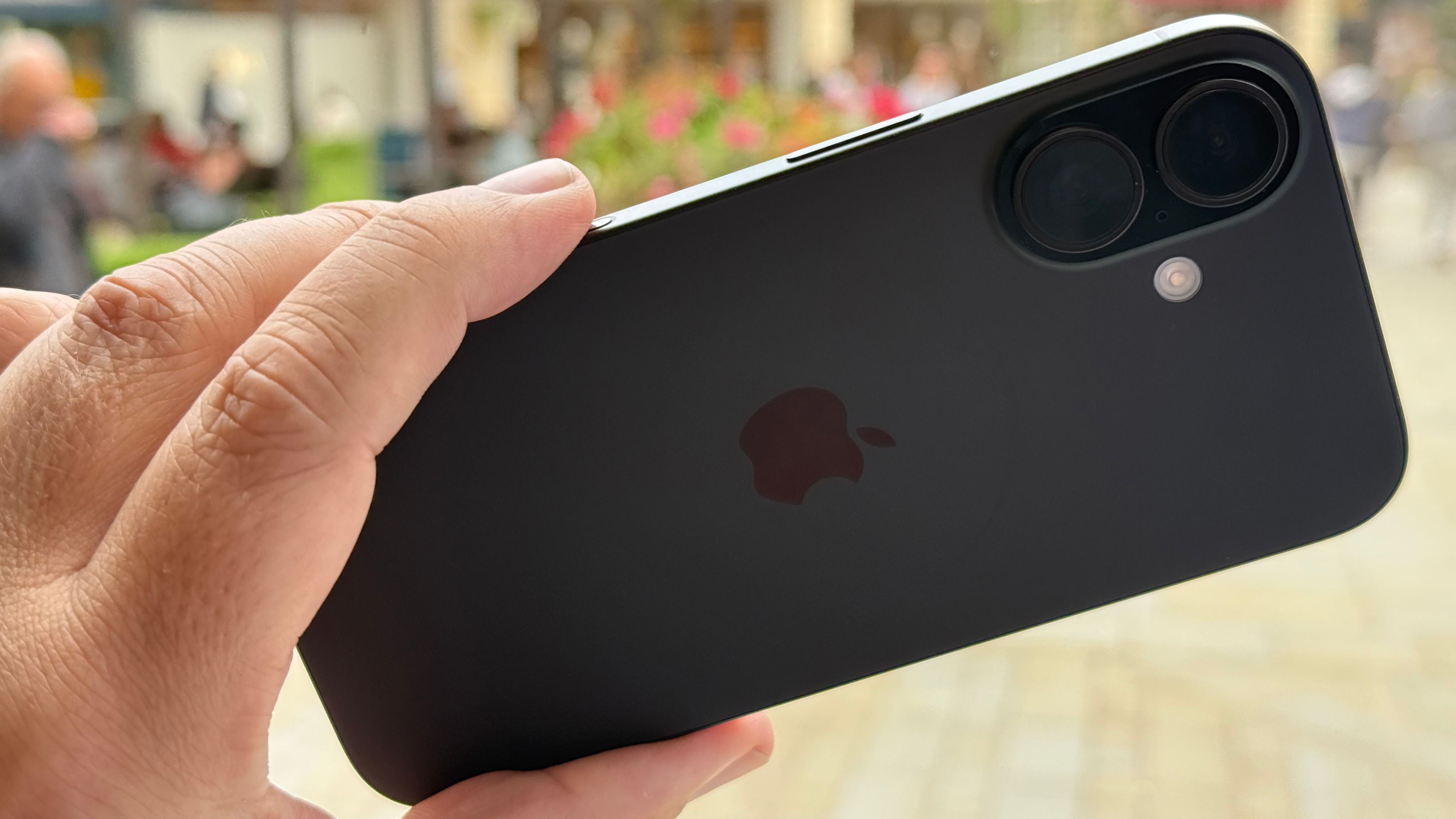
Specifications
Reasons to buy
Reasons to avoid
Don't want to spend the big bucks for the iPhone 16 Pro or Pro Max? The iPhone 16 offers pretty much the same specs at a more affordable price, making it the best value choice in the current iPhone lineup.
After all, the main differences aren't that huge. Firstly, the Pro and Pro Max feature larger, higher-resolution displays with ProMotion technology for smoother scrolling and animations. Secondly, the Pro and Pro Max also have a more advanced camera system. Thirdly, the Pro and Pro Max are powered by the A18 Pro chip, which offers slightly better performance than the A18 in the standard iPhone 16.
Fourthly, the Pro and Pro Max have a premium titanium frame, while the standard iPhone 16 has an aluminum frame. And finally, the Pro and Pro Max have additional features like always-on display, a customizable Action button, and larger batteries.
Most people, though, won't notice these slight differences. Our reviewer found its image quality was excellent, and that the new Photographic Styles provide a wide range of customizable looks. He also appreciated the improved audio tools, the new Camera Control button and the macro photography capabilities via the Ultra Wide lens, a feature absent in the iPhone 15. So if you want a powerful, feature-rich iPhone, this model offers excellent value.
For more details, see our iPhone 16 review.
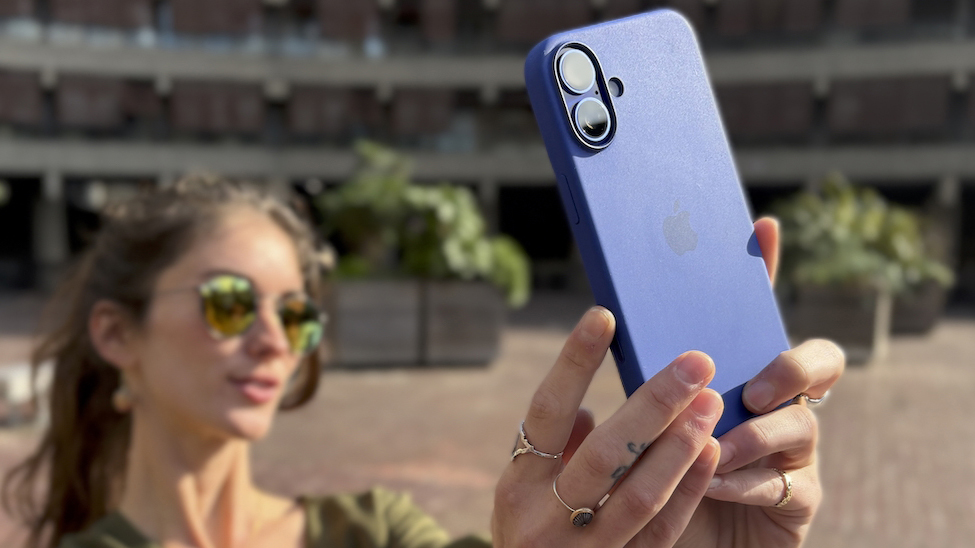
Specifications
Reasons to buy
Reasons to avoid
Like the idea of the iPhone 16 but want a bigger screen? The iPhone 16 Plus is basically the same phone but with a larger, 6.7-inch display compared to the iPhone 16's 6.1-inch screen, providing more immersive viewing for content consumption and apps. Additionally, the Plus model packs a larger battery, ensuring longer usage times between charges.
Our reviewer fou8nd the iPhone 16 Plus offers a compelling balance of large screen size and affordability within the 16 lineup. Its 6.7-inch Super Retina display provides an immersive viewing experience, second only to the Pro Max, at a lower price point than both the Pro and Pro Max models. This makes it an attractive option for those seeking a larger display without the premium cost, although its lack of Pro features may deter users who prioritize advanced photography workflows. For more details, see our iPhone 16 Plus review.
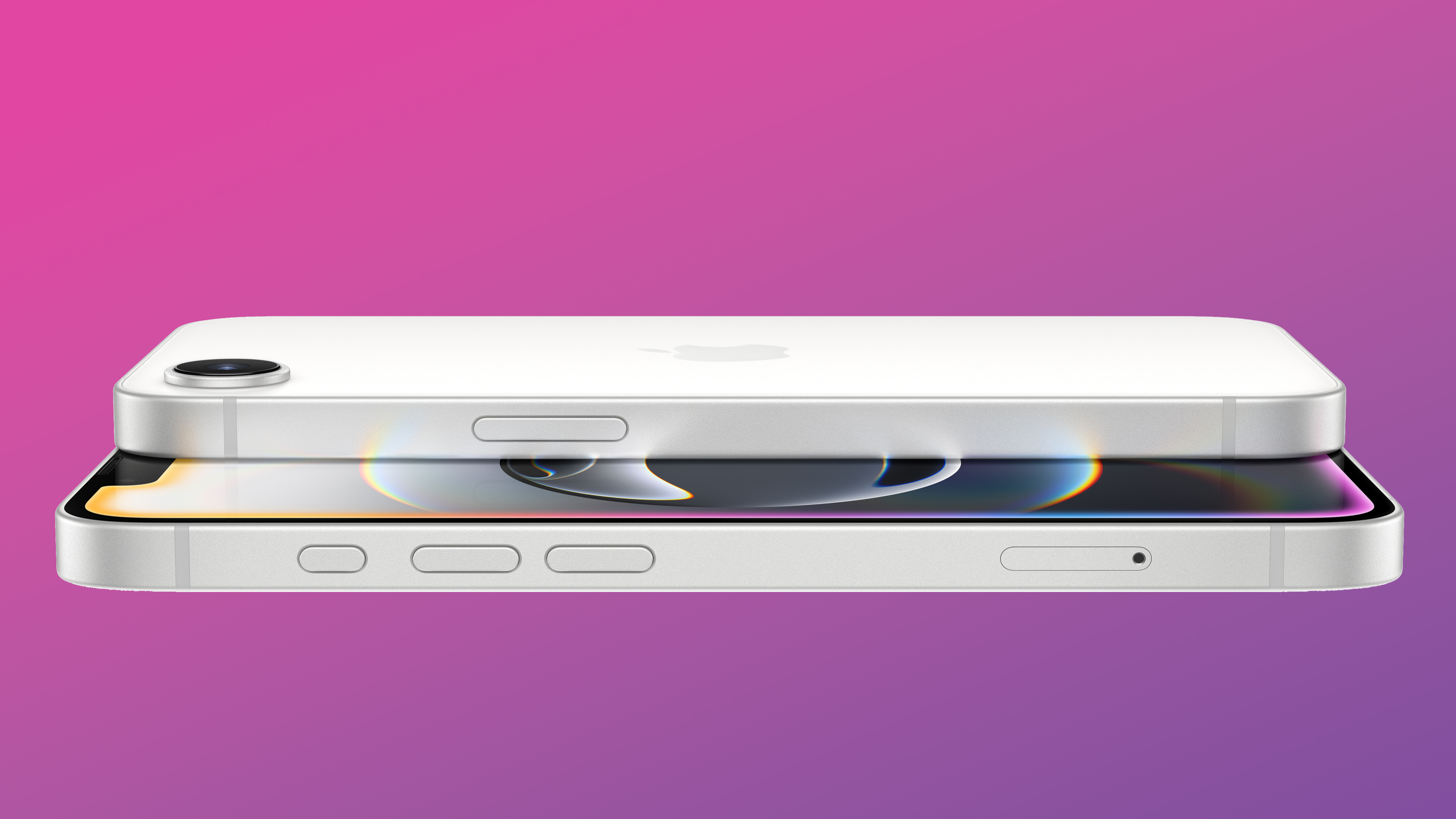
5. Apple iPhone 16e (2025)
Our expert review:
Specifications
Reasons to buy
Reasons to avoid
The iPhone 16e is a successor to its budget iPhone SE (2022), number 16 on our list, for those who want an iPhone but don't want to pay typical iPhone prices. That said, at $599 for the base 128GB model, it's much more expensive than the previous SE model.
It is, however, a lot cheaper than the iPhones listed above. And in many ways, you are getting more for your money. Most notably, iPhone 16e features a larger 6.1-inch OLED display, replacing the previous 4.7-inch screen.
Apple has also removed the home button, transitioning to Face ID and adopted USB-C connectivity. Plus the new phone includes an Action button and a single rear camera; a 48MP Fusion camera with advanced features including optical image stabilization and various photography modes.
Powered by the A18 chip, the iPhone 16e supports Apple Intelligence and offers improved performance compared to its predecessor. The phone provides up to 26 hours of video playback and includes Apple's first in-house modem chip.
To learn more, read our articles iPhone 16e – six things photographers need to know and iPhone 16E is too expensive UNLESS you do this.
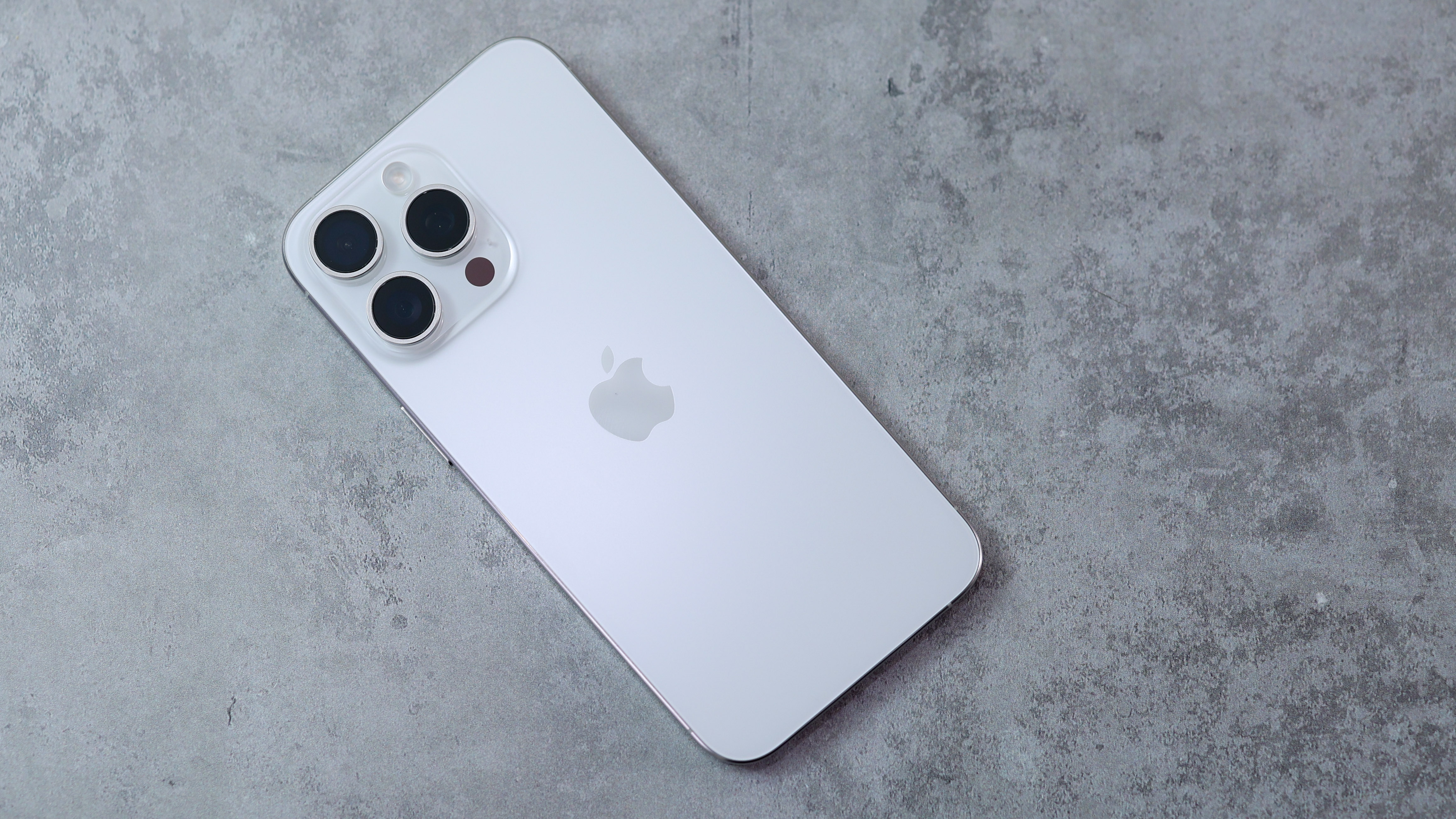
Specifications
Reasons to buy
Reasons to avoid
Last year's premium model, the iPhone 15 Pro Max, boasts a matte titanium frame that doesn't attract fingerprints as much as its predecessors. Also, unlike previous iPhone generations, there's a USB-C port.
There's a customizable Action Button that can change focus mode or launch the camera, torch, Voice Memo app, Magnifier, an accessibility feature, or silent mode. Plus you get an Always-on display (should you want it) and the Dynamic Island notch, a feature that only the iPhone 14 Pro had previously, which gives you access to active apps and Live Activities.
It's great on the inside too, with the Apple A17 Pro chipset making everything run nice and fast. The 6.7-inch Super Retina XDR display is big and beautiful, and the camera is the best yet, with an upgraded telephoto lens and introduces Apple's new 5x zoom tetraprism periscope system.
For more details, see our iPhone 15 Pro Max hands-on review.

Specifications
Reasons to buy
Reasons to avoid
The iPhone 15 Pro and the iPhone 15 Pro Max are pretty similar phones. The main difference is made clear in the latter's 'Max' appendage: ie it's bigger. So if you want a juicy big screen (6.7 inches rather than 6.1), go for the Max. Alternatively, if you want something that's lighter and easier to fit in your pocket, go for the Pro.
That's not the only difference. The Pro also has a less powerful battery, and the zoom is just 3x rather than 5x. But you're still getting pretty much everything else: the same Action button, the same processor, the same 16GB and so on. For more details, see our iPhone 15 Pro review.
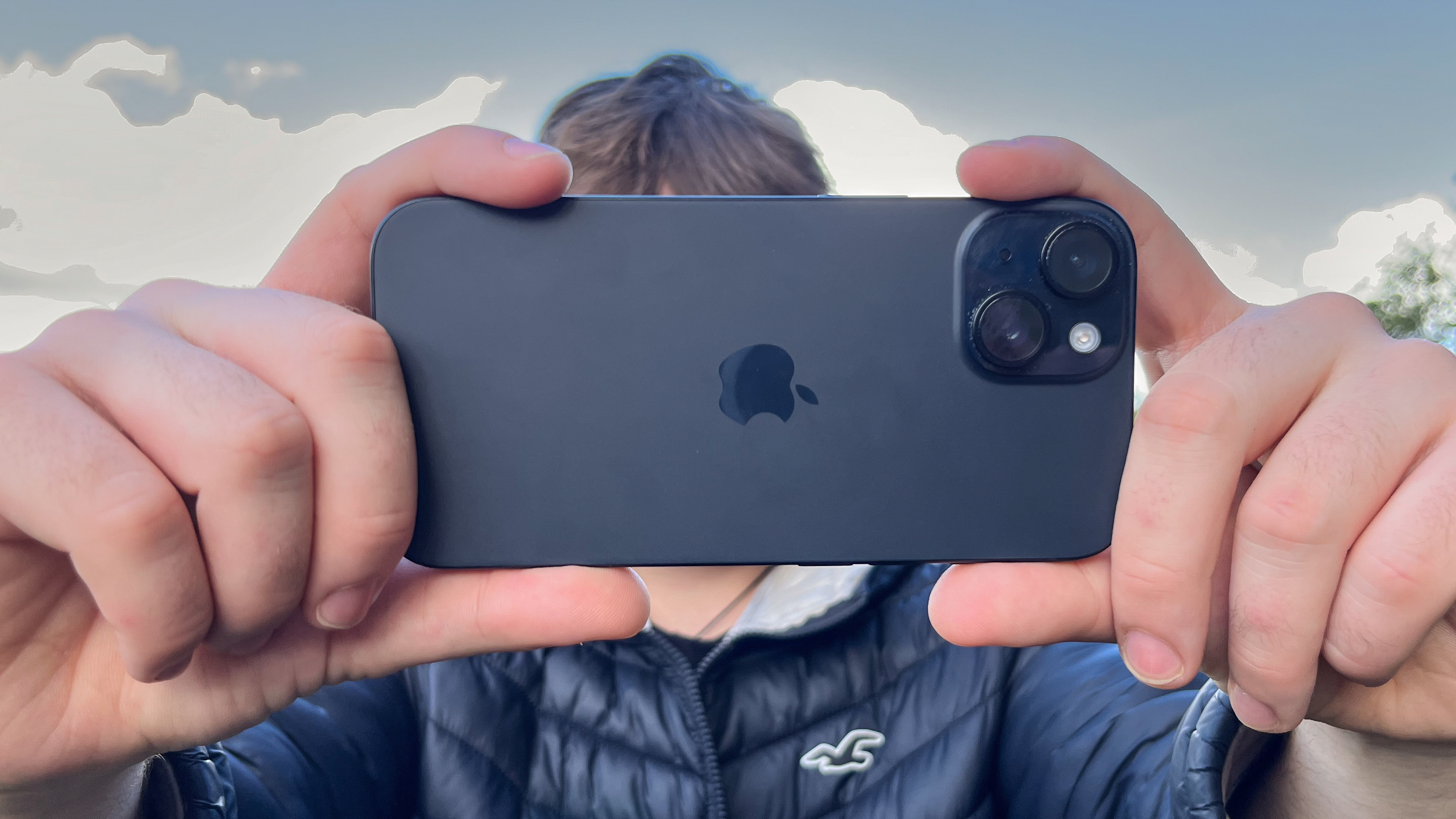
Specifications
Reasons to buy
Reasons to avoid
The Pro and Pro Max versions of the iPhone are largely aimed at two specific types of user: those who want to create content with their phone and those who are focused on gaming. For everyone else, there's the standard iPhone.
Last year's model, as ever, should be a little cheaper than its Pro equivalent, because it's not quite as sophisticated. Specifically, it doesn't have always-on functionality, the Action Button or the telephoto lens. Also, the processor's slightly less fast and the battery life slightly shorter.
However, unless you're doing advanced stuff, most people won't notice the difference. Plus it's lighter than the Pro, which many will see as a positive.

9. Apple iPhone 15 Plus (2023)
Specifications
Reasons to buy
Reasons to avoid
Like the sound of the iPhone 15, but want a bigger screen? Then you want the iPhone 15 Plus. It's a very similar phone, but with a larger screen that's 6.7 inches in diameter as opposed to 6.1. The iPhone 15 Plus also has a slightly larger 4,383mAh battery compared with 3,349mAh in the iPhone 15. On the flipside, it's heavier and a little less portable, so it depends what you value most.
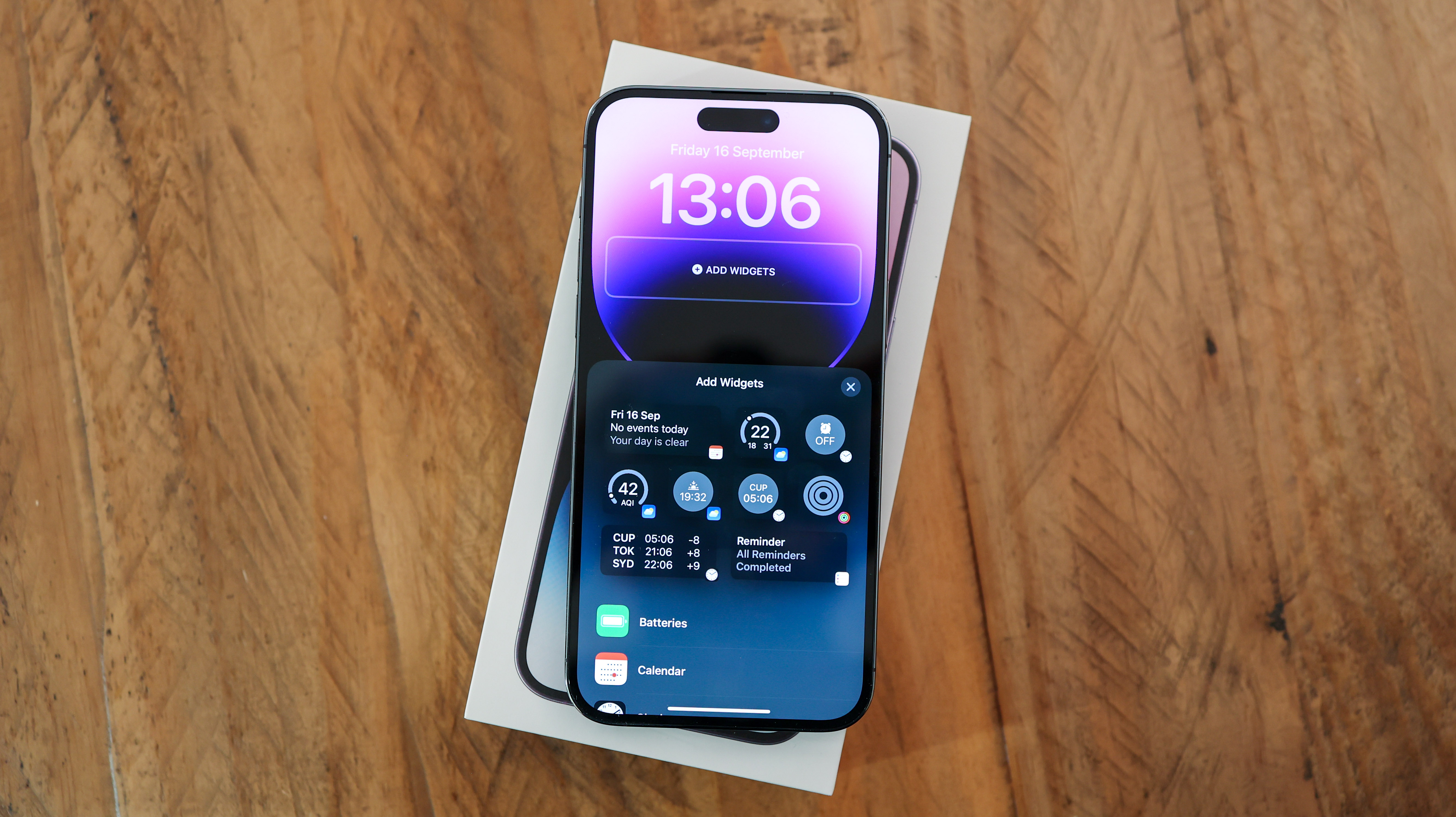
Specifications
Reasons to buy
Reasons to avoid
The iPhone 14 Pro Max checks all the boxes you'd expect from an Apple smartphone. A big, immersive screen. Fancy styling. Stacks of power. A large, 1/1.28-inch, 48MP sensor, and a front camera with autofocus. So even though it's last year's model, it still has a lot to offer.
Yes, if you really want 5x zoom and a USB-C port, you'll need the latest Pro Max. And this older model has a slightly less fast processor, in the form of the A16 Bionic chip. But otherwise, the differences between the two models are slight, so if you can find this one at a significant lower price, we'd still be tempted.
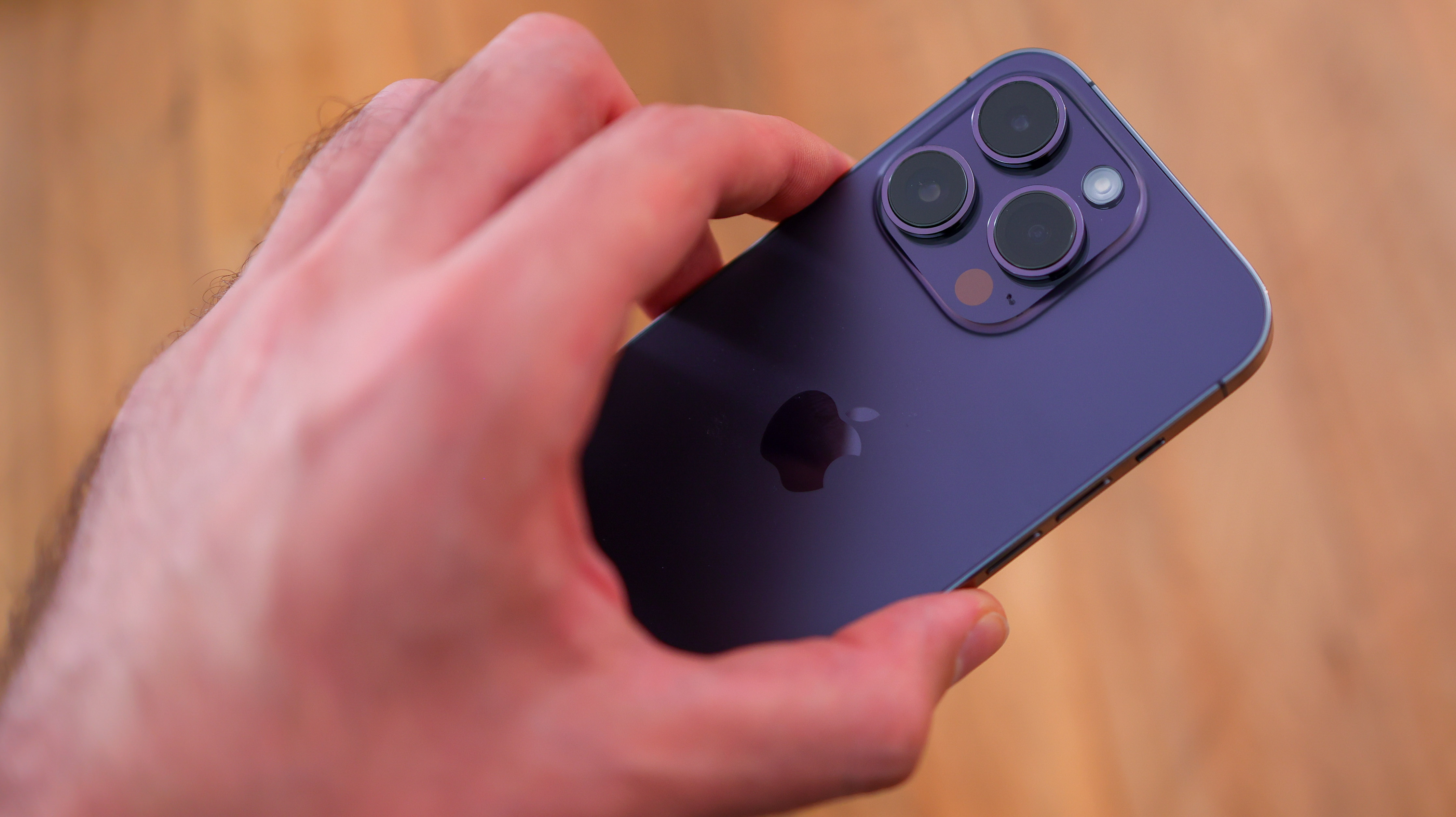
Specifications
Reasons to buy
Reasons to avoid
The main difference between the iPhone 14 Pro and the iPhone 14 Pro Max is the screen size. If you prefer a larger 6.7-inch screen for reviewing and editing images, shooting videos, or even playing games, then the Pro Max is definitely one to go for – as long as you can afford it. However, if you want something more compact and portable, then the 14 Pro is the one to choose.
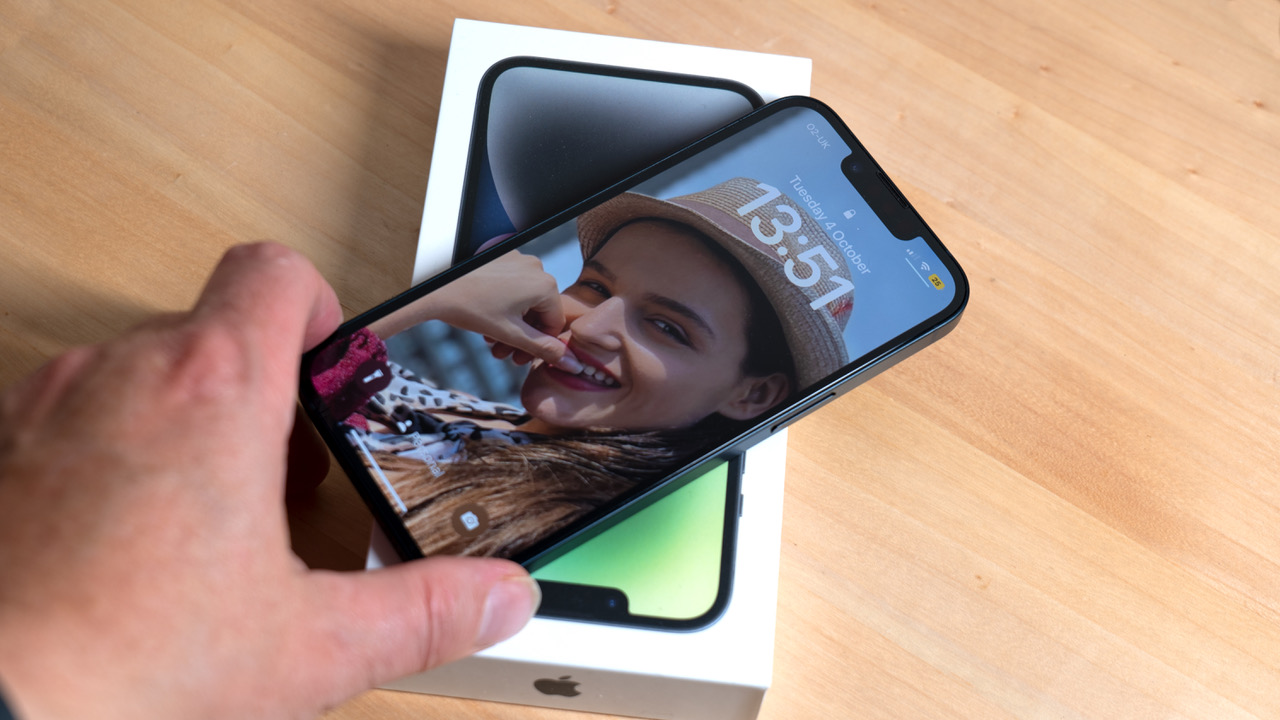
Specifications
Reasons to buy
Reasons to avoid
Although it's now two generations back, the iPhone 14 is still a powerful phone with some nice photography and video making capabilities. However, compared to the iPhone 15, you won't get the Dynamic Island, USB-C and the main camera is just 12MP rather than 48MP. The A16 processor is less zippy, too. So overall, you'd have to be getting a big discount on the iPhone 15 to consider getting the older iPhone 14 in 2023.
Read our full iPhone 14 review for more details.
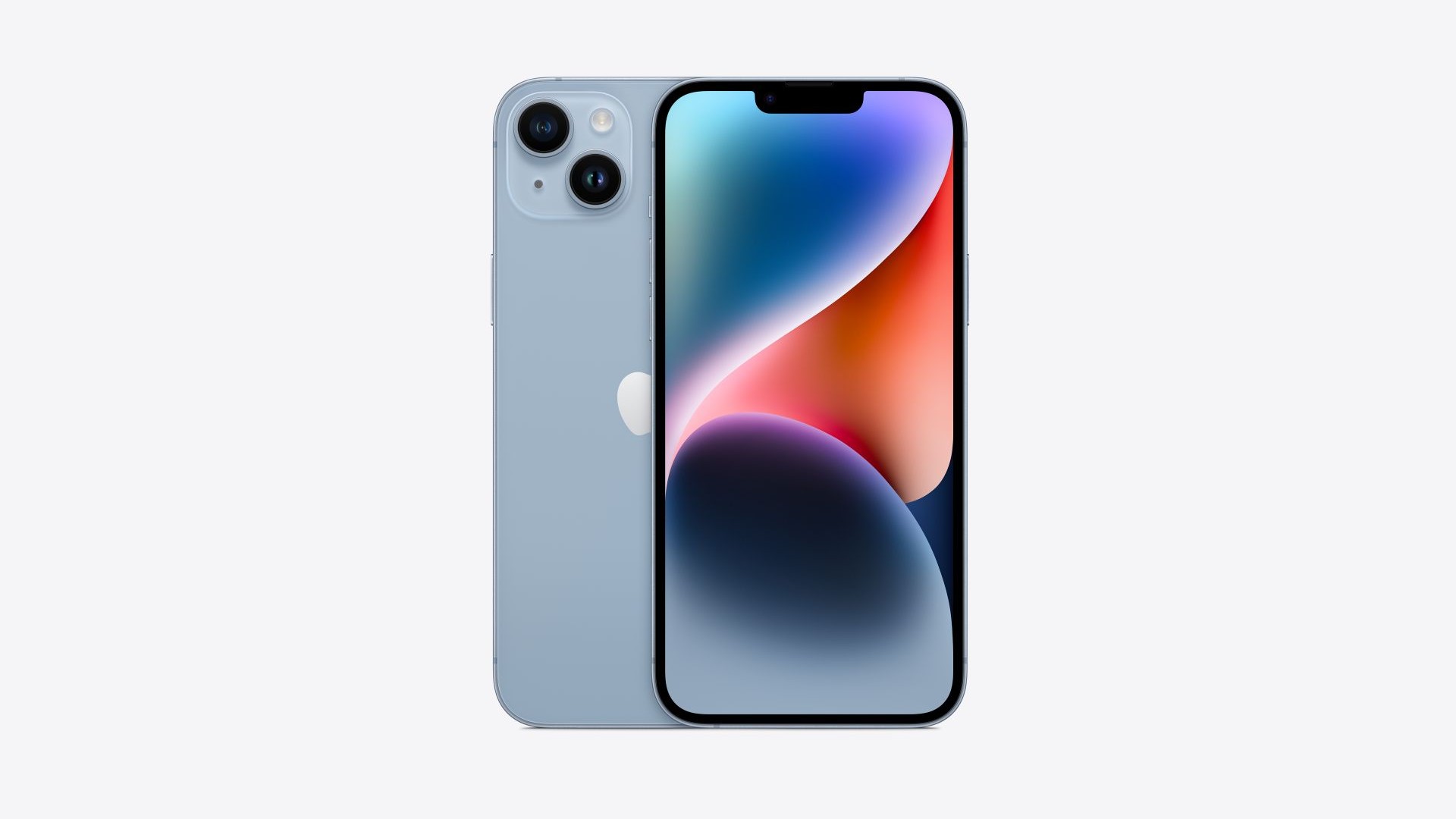
Specifications
Reasons to buy
Reasons to avoid
The iPhone 14 Plus is basically the same as the iPhone 14, but bigger. The benefit is that means it has a bigger screen (6.7 inches compared to 6.1) and room for a bigger battery too. The downside is that it's about an ounce heavier, and less likely to fit in your pocket comfortably. So which you opt for will very much be a personal thing.
For more details, see our comparison article iPhone 14 vs iPhone 14 Plus v iPhone 14 Pro vs iPhone 14 Pro Max.
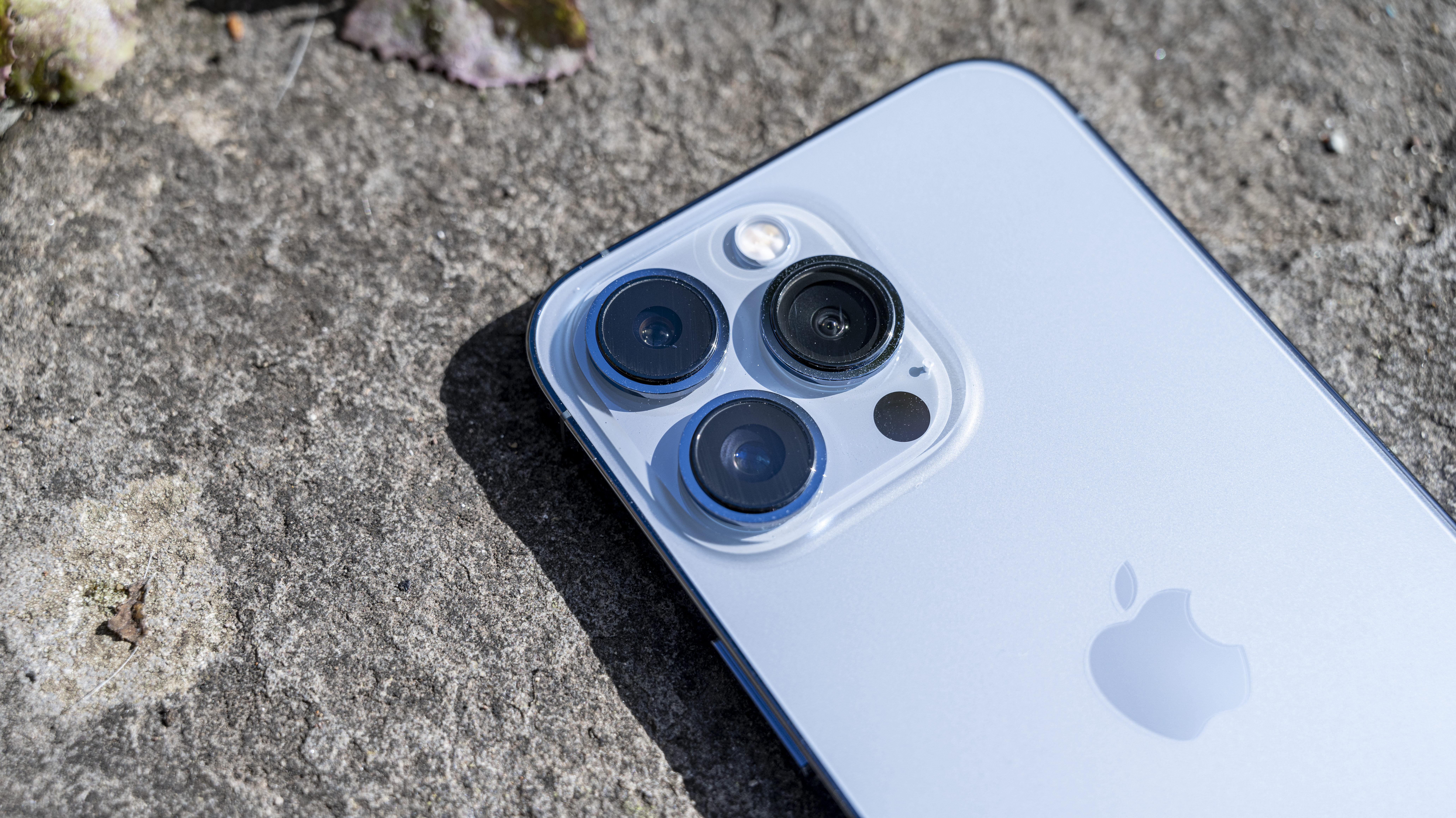
Specifications
Reasons to buy
Reasons to avoid
The iPhone 13 Pro may be ageing, but it remains brilliant for photography, with three top-class lenses (standard, ultra-wide, and telephoto sensors) offering focal lengths of 26mm, 13mm, and 78mm respectively.
The telephoto range jumps from 2x with the iPhone 12 Pro to 3x. The iPhone 13 Pro also improves on its predecessor with a Cinematic mode for video, a macro mode for stills, plus the camera works better in low light too.
The beautiful OLED display is a treat for the eyes. Battery life is very impressive. The A15 Bionic chip is less powerful than that in the 14 and 15 series, but it still makes everything run quickly and smoothly. You can get up to 1TB in storage. 5G is supported. And the phone is water resistant to IP68 standards.
The iPhone 13 Pro Max (next on our list) has even better battery life, and is larger; which may be a pro or a con depending on your opinion. See Apple iPhone 13 Pro vs iPhone 14 Pro to learn more.
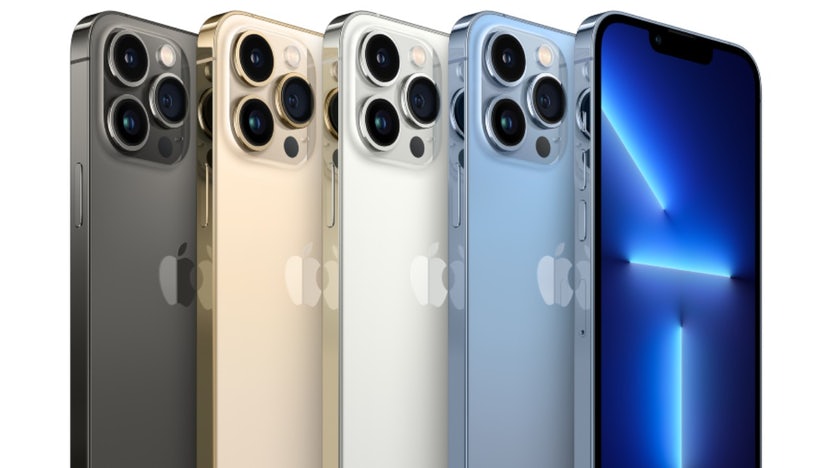
Specifications
Reasons to buy
Reasons to avoid
As we mentioned above, the iPhone 13 Pro Max matches the iPhone 13 Pro in all but two respects. Firstly, it has a bigger screen (6.7 inches to the latter's 6.1). And secondly, it boasts better battery life. So, for example, Apple promises up to 28 hours of video playback versus up to 22 hours on the Pro. If you decide to buy one, see our guide to the best iPhone 13 Pro Max cases.
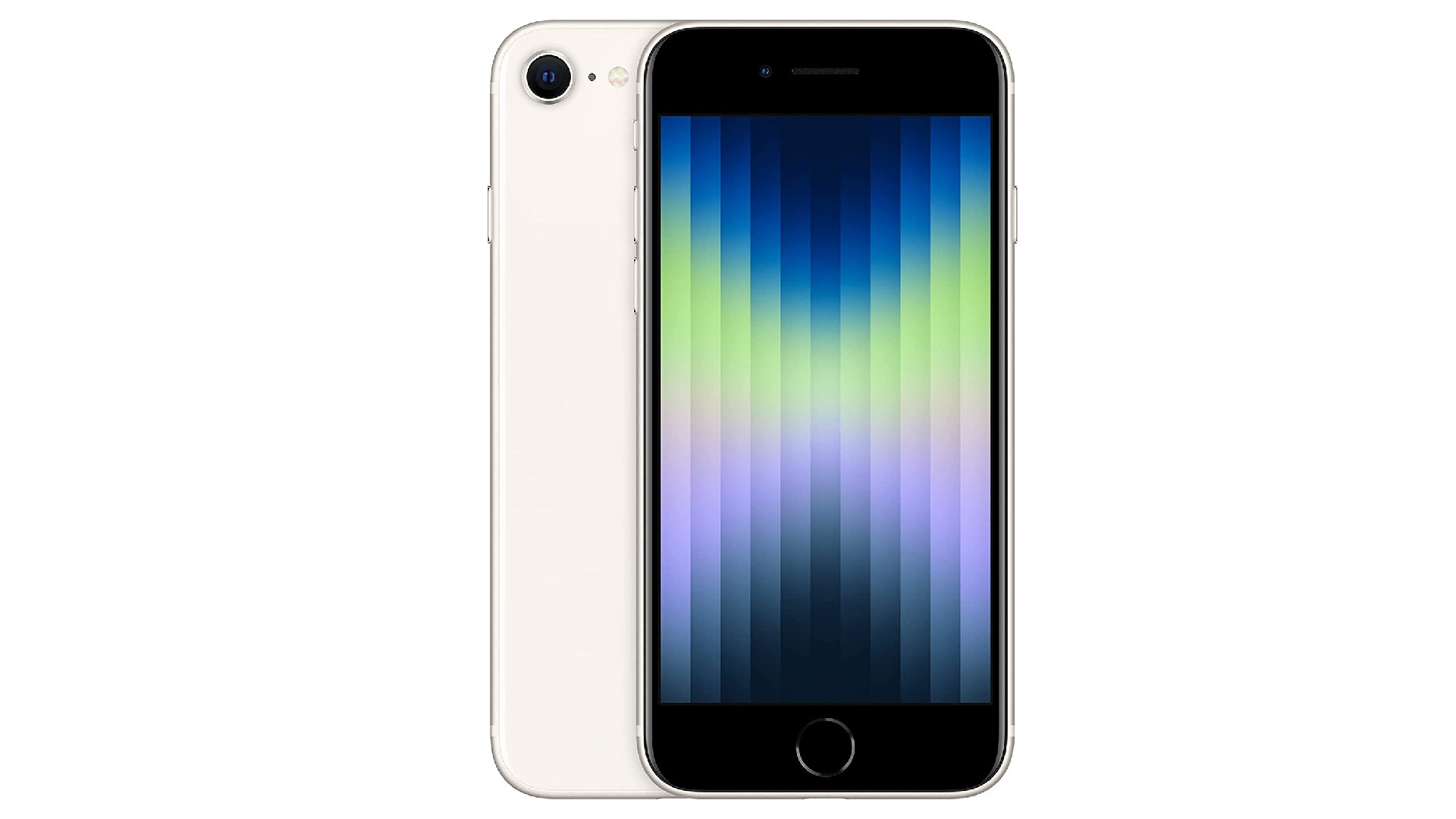
16. iPhone SE (2022)
Specifications
Reasons to buy
Reasons to avoid
If you want a cheap iPhone and don't mind a small (4.7 inch) screen, the iPhone SE is our top recommendation. At a quite affordable price, you'll get many of the same advanced capabilities and performance you'll find in much more expensive iPhones.
This latest iteration of the iPhone SE features 5G, longer battery life, and improved durability. It also features an all-new camera system powered by A15 Bionic, with a 12MP f/1.8 aperture wide camera on the rear that offers great tools like Portrait mode and the same Smart HDR 4 tech as the iPhone 13. The rear camera (7 MP, f/2.2) isn't half bad, either.
The iPhone SE (2022) is rated IP67 for water and dust resistance, features the familiar Home button, and supports Touch ID – an easy, private, and secure alternative for logging in to apps, authorizing purchases, and making Apple Pay transactions.

Specifications
Reasons to buy
Reasons to avoid
The iPhone 13 looks and feels very similar to the iPhone 13 Pro (number 9 on our list), but is much cheaper. So what are the main differences?
To start with, the display on the iPhone 13 isn't quite as good. It offers a maximum 800 nits of brightness, compared with the Pro's 1,000; and a 60Hz refresh rate rather than the Pro's 120Hz. It's a similar story with the cameras. The iPhone 13 doesn't shoot in low light quite so well, and lacks the new ProRes video compression format introduced in the Pro.
Overall, though, most of the high specs of the iPhone 13 Pro are matched in the iPhone 13, including the A15 Bionic chip, 5G support, and strong battery life. Which means the cheaper price of the iPhone 13 still makes it very good value.

Specifications
Reasons to buy
Reasons to avoid
Want the same specs as the iPhone 13 but in a smaller handset? That's what the iPhone 13 mini has to offer, with its small but perfectly formed 5.4-inch screen. The battery life isn't quite as good, but otherwise this is basically the same phone, but smaller. A great choice, then, if you're on a budget and want something you can easily slip into a small bag or pocket.
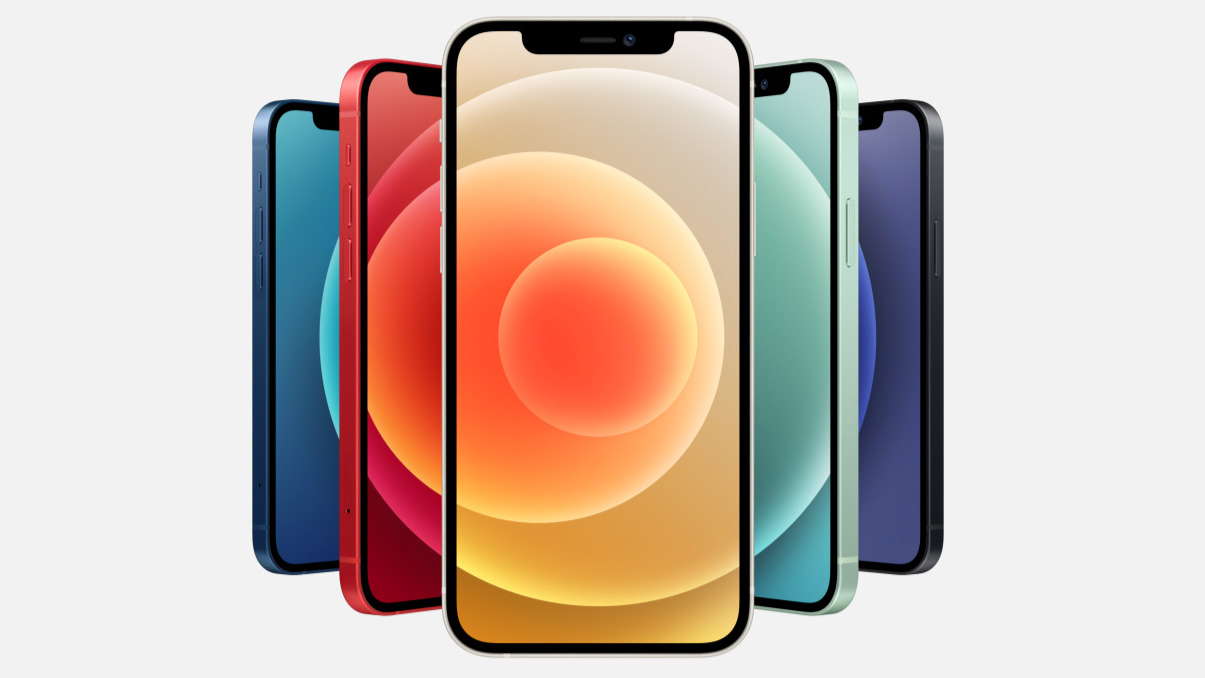
19. iPhone 12 (2020)
Our expert review:
Specifications
Reasons to buy
Reasons to avoid
If you want a 5G iPhone that's relatively cheap, then the iPhone 12 is a great option. Especially as it has a pretty similar design to the iPhone 13.
As a slightly older phone, it's cheaper for a reason. For example, its A14 Bionic chip isn't quite as zippy as the A15 in the iPhone 13. Nor does it have a dedicated telephoto sensor, although it does offer digital zoom of up to 5x. And the display maxes out at 600 nits, compared to 800 nits on the iPhone 13.
The camera isn't as good either. The iPhone 13’s 12MP wide sensor takes in 47% more light than the 12, and so there's less noise in images. Battery life is much improved in the iPhone 13. And the maximum storage you can get in the iPhone 12 is 256GB: half that of its successor.
In day to day use, though, most of these differences won't be immediately noticeable, especially if you're not a pro photographer. And so the iPhone 12 remains a very capable phone that's well worth the money.
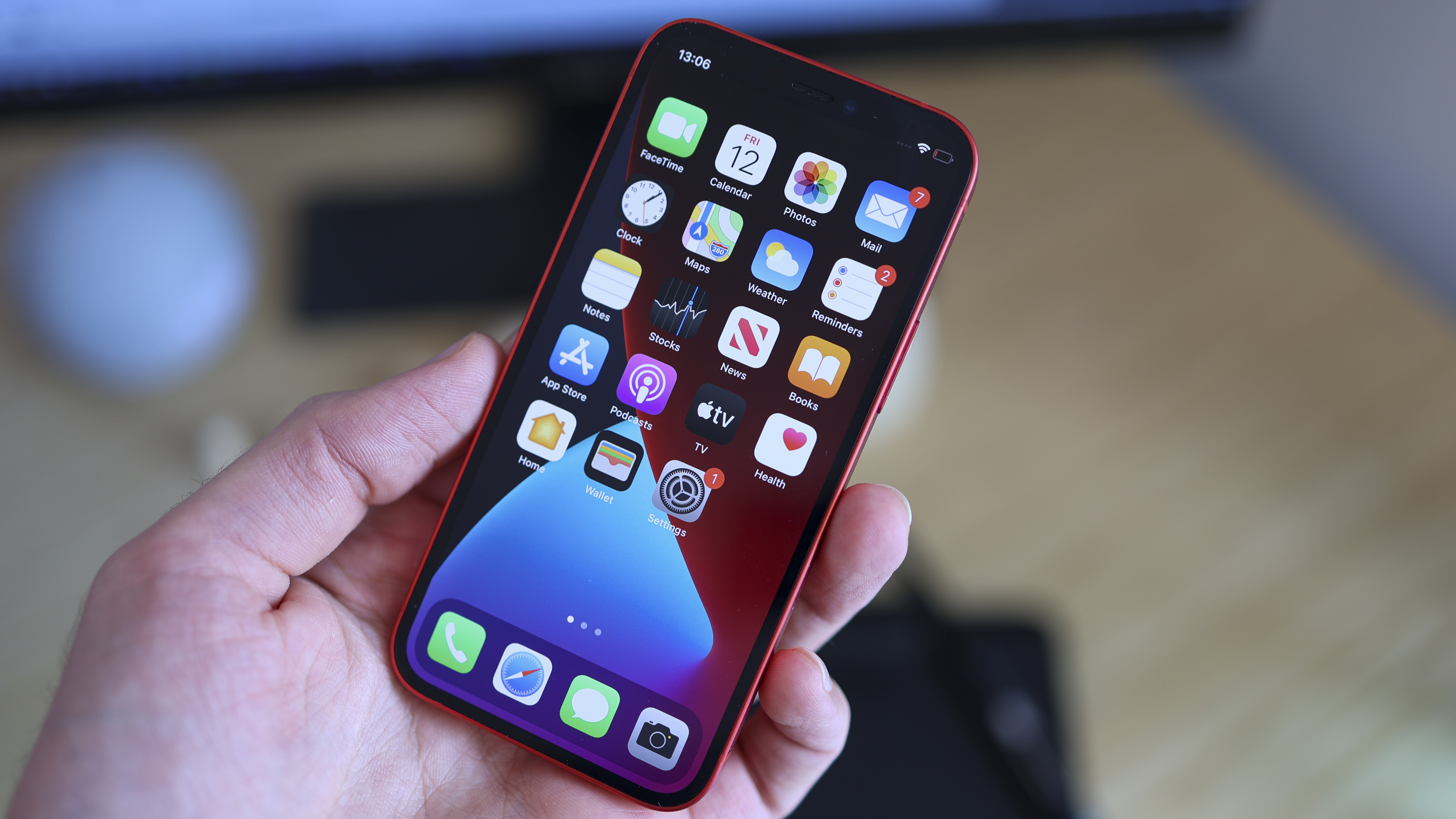
Specifications
Reasons to buy
Reasons to avoid
The iPhone 12 mini is essentially a smaller version of the iPhone 12. It has all the same features, the same cameras and the same 5G support. The only difference is that it has a smaller screen (5.4 inches to the iPhone 12's 6.1 inches), and it's smaller and lighter overall.
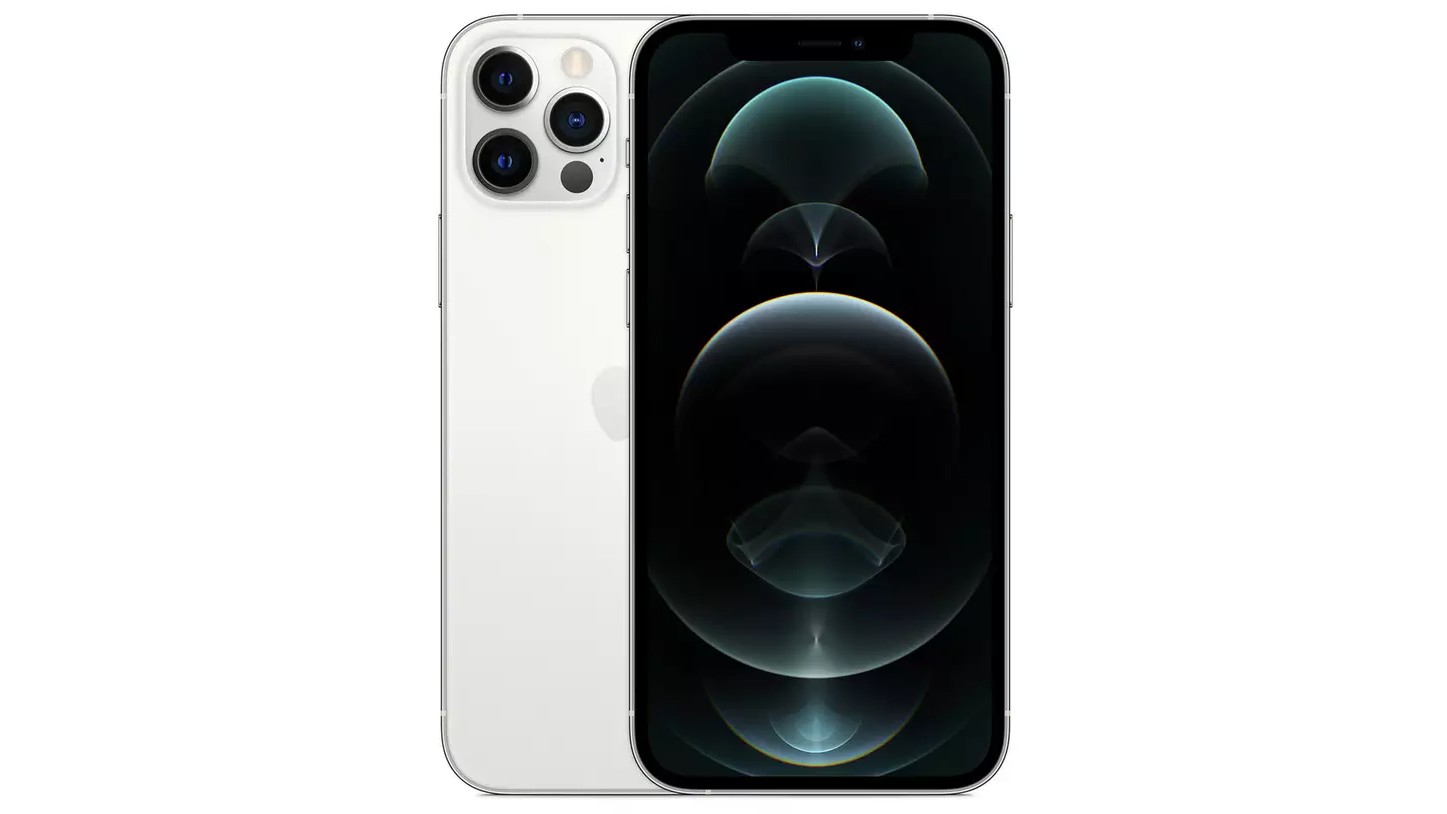
Specifications
Reasons to buy
Reasons to avoid
While it's a year older than the iPhone 13 Pro, the iPhone 12 Pro is surprisingly similar, and so if you can get one for a significantly lower price, it's worth considering. The changes between this older model and its successor are fairly small and incremental. For example, when it comes to photography, both offer a standard, ultra-wide and a telephoto lens. The iPhone 13 Pro’s standard lens has a slightly wider aperture, though (f/1.5 vs f/1.6), and also uses the larger sensor size. Its ultra wide angle lens also has a wider aperture (f/1.8 vs f/2.4 lens).
Perhaps most strikingly, the telephoto on the older model is 2x, compared to 3x on the 13 Pro. These differences do make for better photos, but it's still a close-run thing. Elsewhere, you get the same display, the same processor, the same 5G connectivity. And so if you're not that concerned about the cameras, the iPhone 12 Pro may be your better bet considering how much cheaper it is than the 13 Pro.
For more details, see our comparison article iPhone 12 Pro vs iPhone 13 Pro.
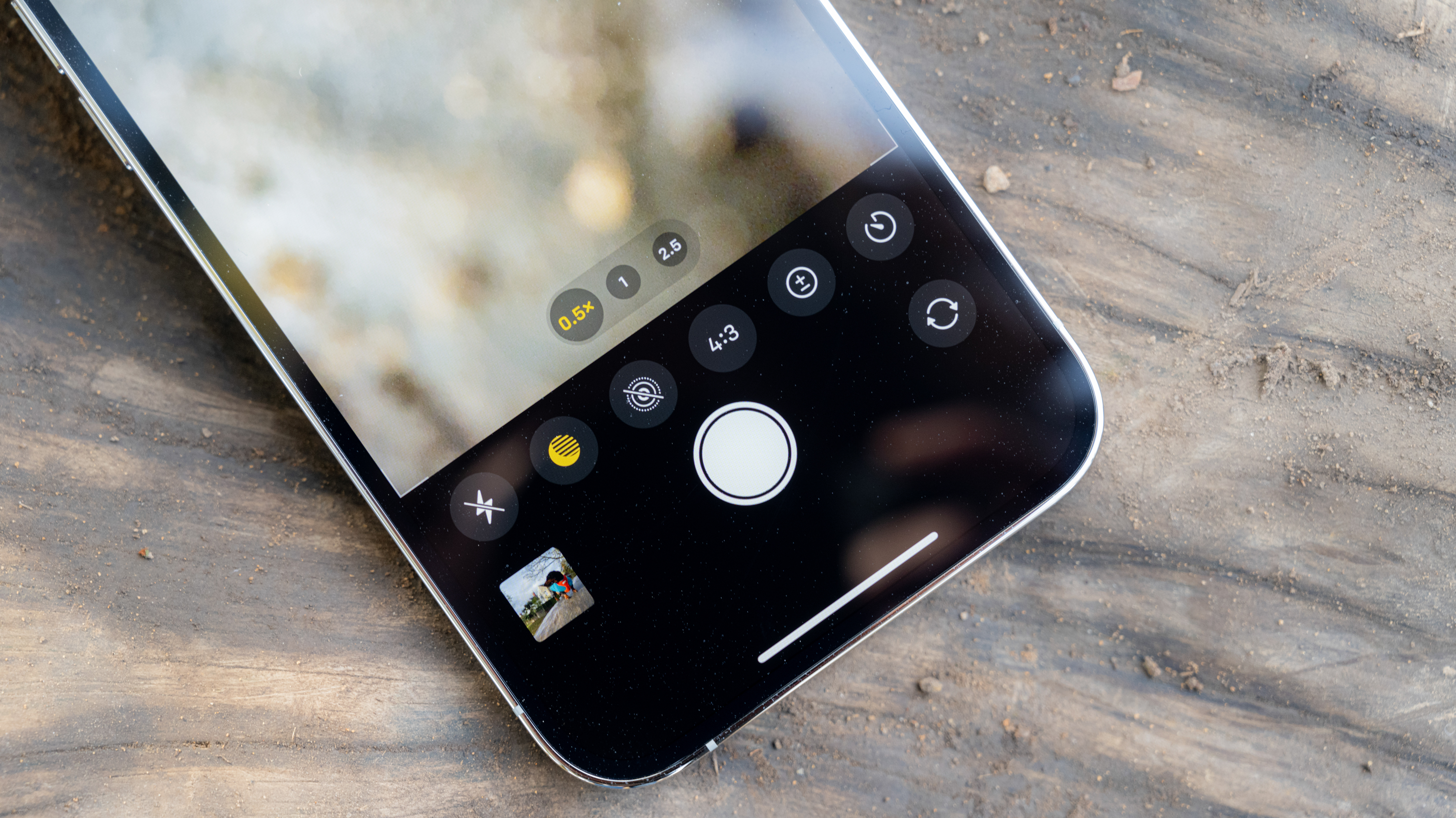
Specifications
Reasons to buy
Reasons to avoid
As the name suggests, the main difference between the iPhone 12 Pro Max and the iPhone 12 Pro is the larger screen, which is 6.7 inches in diameter to the latter's 6.1. The Max also has the better camera, well just. While both phones boast three 12MP (wide, ultrawide, and telephoto), the iPhone 12 Pro Max lets in more light thanks to its 47% larger wide sensor. That makes it much stronger in low light conditions. There's also a difference in focal length in the telephoto: f/2.2 to the Pro's f/2.0.
You can also expect better battery life in the iPhone 12 Pro Max. In most respects, though, the two cameras are virtually identical.
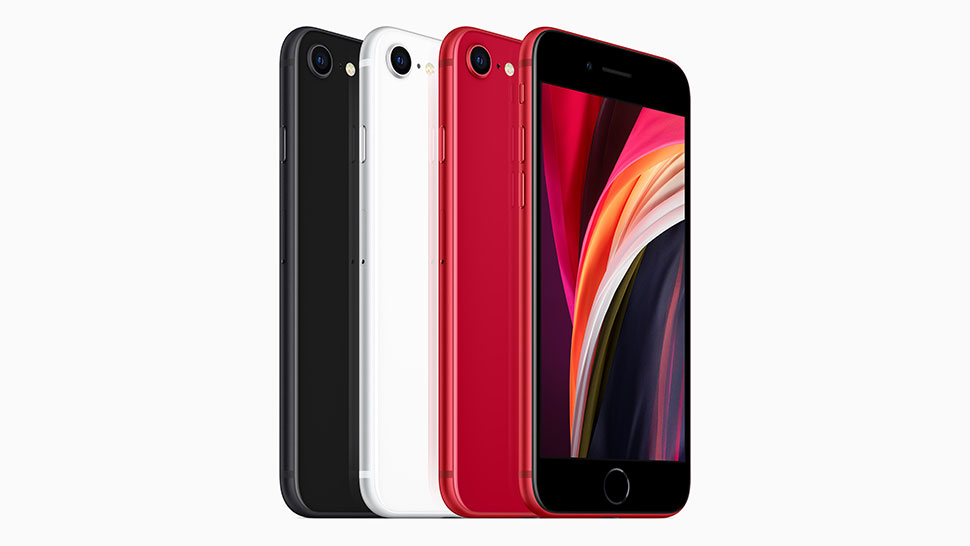
23. iPhone SE (2020)
Specifications
Reasons to buy
Reasons to avoid
Want an iPhone, don't need it to be big, and don't have much money? Then the 2020 version of the iPhone SE is a pretty basic model that should fit the bill.
It has a much smaller screen than the iPhone 12 or even iPhone 12 Mini at 4.7 inches. It has just 3GB of RAM compared to the 4GB in those models, and an older processor (A13 Bionic rather than A14). It doesn't support 5G. And its cameras are just a basic 12MP lens on the rear and 7MP on the front.
On the plus side, it has the same amount of storage. And at the end of the day, despite the compromises, you're still getting an iPhone for not a lot of money.
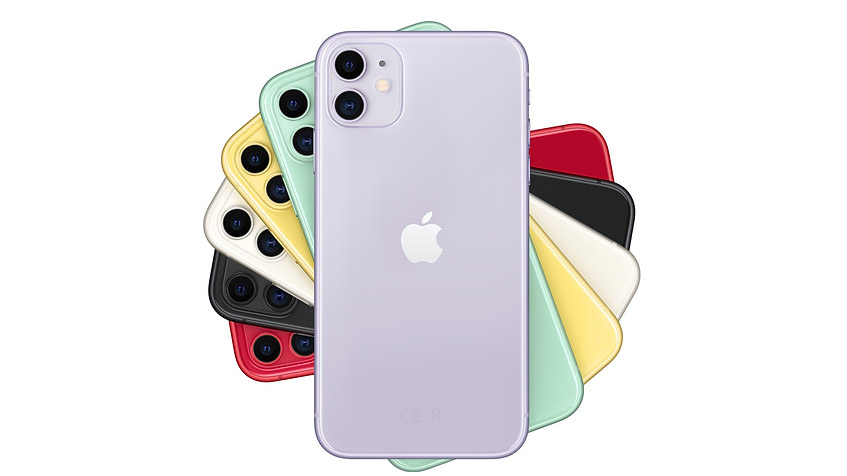
24. iPhone 11 (2019)
Our expert review:
Specifications
Reasons to buy
Reasons to avoid
Given how much the world has changed since 2019, it can seem like a lifetime ago. But strictly speaking, the year the iPhone 11 was released wasn't that long ago. And this model now offers great value to anyone not needing the latest premium specs.
You won't get 5G connectivity, an OLED screen, a telephoto lens, or the latest processors. But what that leaves is still a very powerful phone.
Casual photographers will be happy, thanks to a 12MP ultra wide sensor with an aperture of f/2.4 and a 120° field of view, plus a 12MP wide sensor, with an aperture of f/1.8. You also get 4K or 240fps video recording, and top-notch tools including Portrait mode, Focus Pixels, Smart HDR and optical image stabilisation.
The 6.1-inch LED display is bright and crisp, with a decent resolution of 1,792 x 828, and Apple’s A13 Bionic processor does a good job of running everything smoothly. So while this isn't the newest or most powerful iPhone, it's still very much a contender for your money.
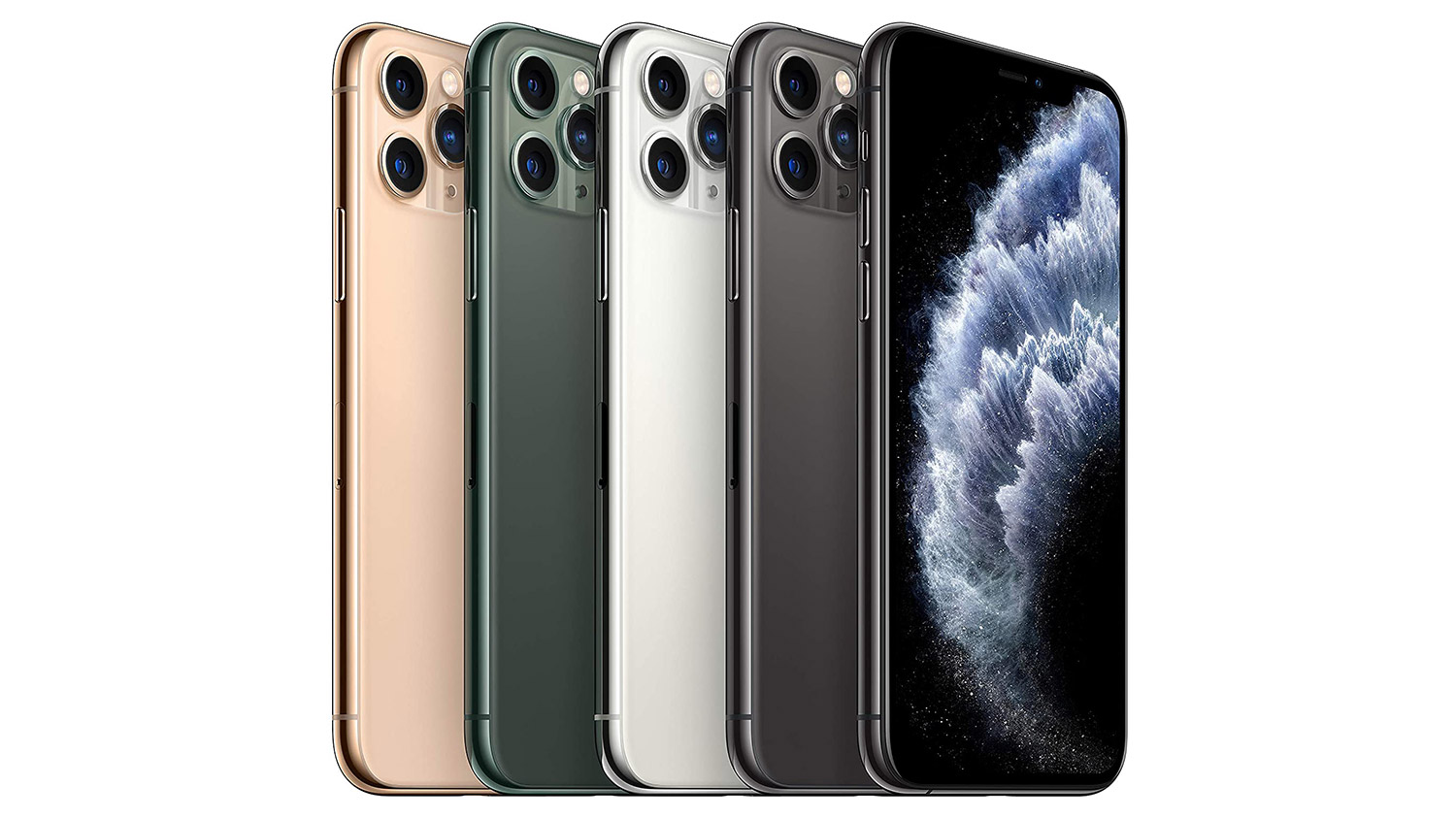
Specifications
Reasons to buy
Reasons to avoid
As one of the most advanced of Apple's 2019 phones, the iPhone 11 Pro still has a lot to offer. For photographers, there's a triple-sensor camera, each boasting 12MP. The standard lens offers a 26mm equivalent at f/1.8, the ultrawide provides 13mm at f/2.4, plus there's a telephoto lens giving 52mm at f/2.0. You also get Night mode for low-light shooting, smart HDR, and 4K video recording up to 60fps.
The 12 Pro is better in low light, thanks to its LiDAR scanner and f/1.6 aperture. And the 11 Pro lacks support for the ProRAW file format or Dolby Vision video recording. But otherwise, photography-wise, they're not that different.
Elsewhere, the main things you're losing compared with the iPhone 12 Pro are 5G support, an older processor, and a slightly bigger display (6.1 inches in the 12 compared with 5.8 inches here).
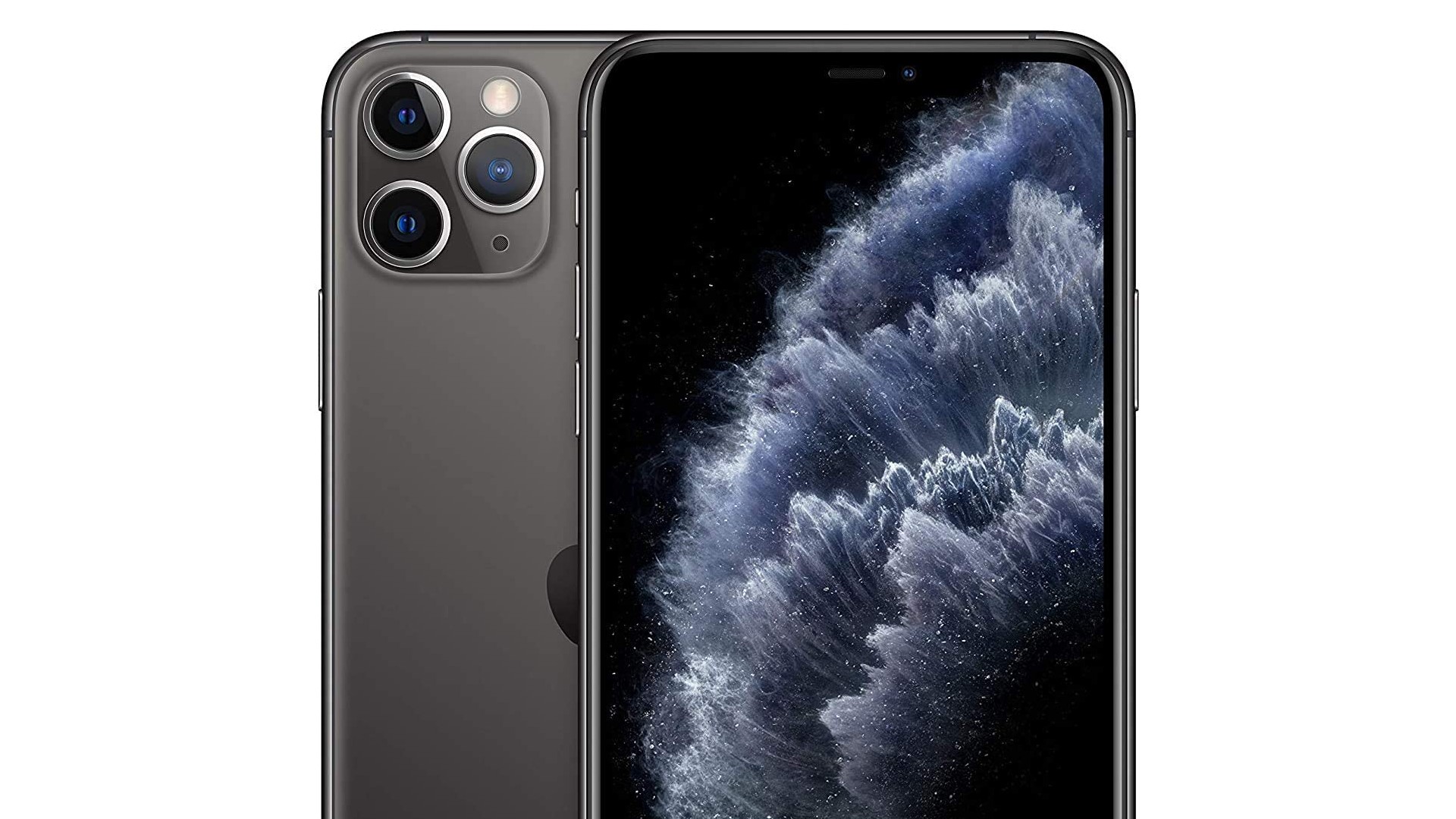
Specifications
Reasons to buy
Reasons to avoid
The iPhone 11 Pro Max has the same cameras, processor and operating system as the iPhone 11 Pro. The main difference is that it's bigger, with a 6.5 inch screen. It also has a larger battery, offering 3,969mAh to the iPhone 11's 3,046mAh.
iPhone Generations: Older models
You might also like the best iPhone microphone and the best gimbal for iPhone, which will stabilize your footage. These are the best iPhone printers.
Best iPhone 12 cases
Best iPhone 12 Pro cases
Best iPhone 11 cases
Best iPhone 11 Pro cases
Best iPhone 11 Pro Max cases
Best iPhone 7 cases
Best iPhone 8 cases
Best iPhone 8 Plus cases
Best iPhone XS cases
Get the Digital Camera World Newsletter
The best camera deals, reviews, product advice, and unmissable photography news, direct to your inbox!
Tom May is a freelance writer and editor specializing in art, photography, design and travel. He has been editor of Professional Photography magazine, associate editor at Creative Bloq, and deputy editor at net magazine. He has also worked for a wide range of mainstream titles including The Sun, Radio Times, NME, T3, Heat, Company and Bella.
